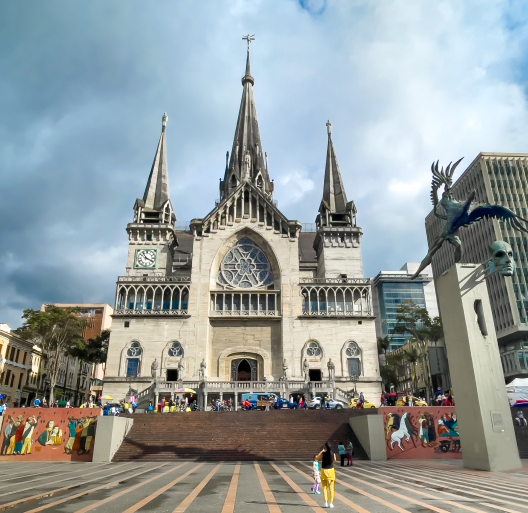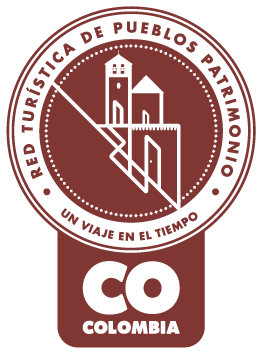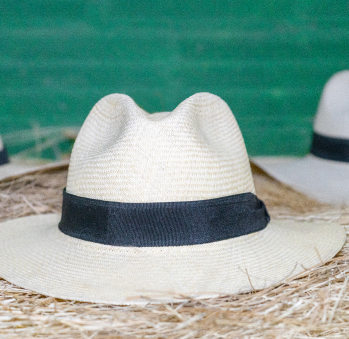Caldas Route
Back to main routeIn Caldas, you will have the chance of witnessing firsthand the particular division of labor that the crafting of the famous Aguadeño hats demands. According to it, weavers, finishers, and traders work in tandem to create an entire system of manual production in which every link of the chain complements another. This dates back more than a century and a half ago, when, for a long period of time, who made the hats were precisely the men. Since they were stronger, they could tie iraca fibers together very easily, thus making the strong weaving that makes this hat stand out. Nonehteless, the time of the coffee bonanza arrived, and the men who earned their sustenance from this trade went to the bushes to plant and collect coffee. In this way, weaving the hats got left in women’s hands, who, from then on, have held the craft. You will witness all of this there, as well as the living architectural heritage of Salamina, a wonder that makes part of the Network of Heritage Towns of Colombia, having become one of the best showcases of what Antioquian colonization was during the nineteenth century.
Embark on a journey full of history

Artisans along the way
Artisans along the way
We recommended this tour
Schedule the visit in advance with the artisans.
Carry cash
6 days
Car or Bus

Manizales
Start this trip at the department’s capital. You can stay several days in Manizales discovering its many treasures, among which you can count the Gold and Art Museums of Caldas, which have fantastic collections of pre-Columbian Quimbaya vestiges and of popular art; as well as the old San Esteban Cemetery. You will also be able to see its rich natural heritage in Los Nevados (The Snow-Capped Mountains) Park; the Ruiz Snow-Capped Mountain, an icon for mountain-climbing; the Branco River Natural Reserve; and the Los Yarumos Ecopark. Of course, since this city is very high-up, almost touching the heavens, the Chipre Viewpoint, the Herveo Tower (better known as the one of the Cable), and the aerial cable trip are a must-see to enjoy the landscape properly. Discover also two master craftspeople, wood turners and metalworkers, and immerse yourself in the traditions that you will continue to discover in this department. We recommend you end your day at Salamina to start the next one there.
Salamina
38 kilometers away, almost half an hour on the highway, you will discover this beautiful town. It is known as Caldas’s Athens, or Colombia’s City of Light if you go during Holy Week. Seeing its balconies is enough to witness the woodcarving tradition that is preserved here and that has the name of Eliseo Tangarife as one of its masters. You will have the chance of meeting firsthand some of the finest woodworking masters, getting to know the history of the trade, and visiting the San Vicente de Paul Society, where beautiful works are done on the loom in sheep’s wool. Do not miss out on passing by the emblematic Carola House, display of carving mastery, nor do so with the La Balbanera Cemetery. This can also become a plan to visit the relief murals that makes a master of Guatapé’s baseboards. A must: passing thorough the Samaria Valley in the town of San Félix, where you will be able to see a landscape of wax palms that is, simply put, monumental. After a beautiful day, leave for Aguadas.


Aguadas
Although the distance that separates Salamina from Aguadas is relatively small —48 kilometers— it is a two-hour ride because the highway is not the best and you must advance slowly. Nevertheless, the sacrifice is worth it because you will arrive at a town that has given the country one of its symbols: the Aguadeño hat, which stands out at the Hat Museum. Its people are nice and charming, and there are a lot of things to do. Visit the Pueblito Paisa, the Monserrate Hill, the Temple of the Immaculate Conception, and the Chiquinquirá Park to give yourself an idea of how the days are spent in this beautiful town, popularly known as the city of fog. Get your coat ready, because it rains a lot here! Do not leave without trying a good bandeja paisa, nor do so without having a taste of the traditional Aguadas sweet: the pionono.

Pueblo Patrimonio
La Red Turística de Pueblos Patrimonio de Colombia es un programa especial del Ministerio de Comercio, Industria y Turismo, ejecutado por FONTUR, que trabaja con 17 municipios de Colombia que poseen declaratoria de Bien de Interés Cultural (BIC) a nivel nacional para su valoración y proyección mediante el turismo, generando así más oportunidades de desarrollo y sostenibilidad en las comunidades.

La Medalla a la Maestría Artesanal es un galardón que Artesanías de Colombia entrega anualmente, con el cual se hace un reconocimiento a aquellos artesanos, empresas y comunidades artesanales que, contando con una trayectoria destacada, sobresalen a nivel nacional por su excelencia en el oficio así como por preservar el quehacer artesanal.

Denominación de Origen
Es un signo distintivo que identifica productos reconocidos o famosos por tener una calidad o características específicas derivadas esencialmente del lugar de origen y la forma tradicional de extracción, elaboración y producción por parte de sus habitantes. La protección conferida sobre una Denominación de Origen implica que ninguna persona puede identificar con la denominación protegida productos iguales o similares a los amparados, cuando no provengan del verdadero lugar y no cumplan con las características o calidades que le han dado la reputación al producto reconocido. Las Denominaciones de Origen para productos artesanales colombianos que han sido protegidas por la Superintendencia de Industria y Comercio en nuestro país son actualmente 12.
No puede copiar contenido de esta página





























































